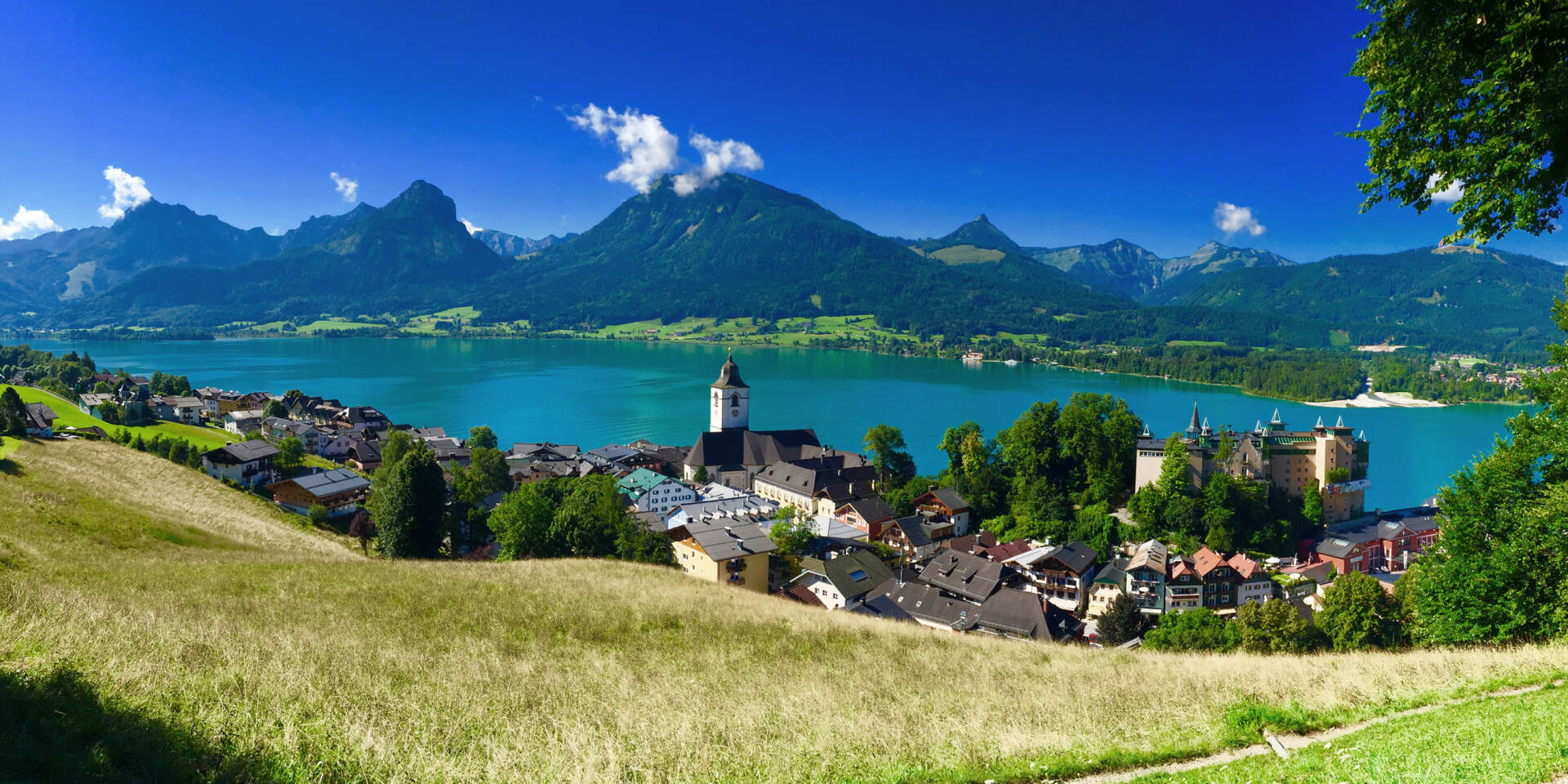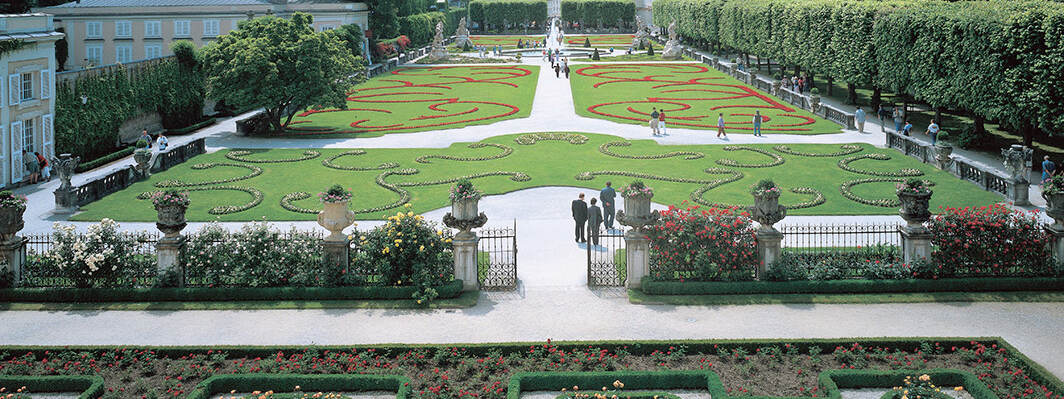
Scenes and locations
Find out where The Sound of Music was filmed, about the original settings and filming locations, and the true story behind them
The Original Sound of Music Tour® was born when tourists in Salzburg first began asking about The Sound of Music locations after the movie's release in 1965. The Panorama Tours drivers had been involved with film productions for months, so they were able to arrange a sightseeing tour. They also knew a lot of gossip about the filming, and the tour soon became popular.
Over the last decades, the Original Sound of Music Tour® has matured into an extensive Salzburg city and lake district tour which not only takes its guests to the settings of the movie but also to the main cultural attractions of the region. This tour is a must-see for all fans of The Sound of Music on vacation in Salzburg!
Mirabell Palace & Mirabell Garden
Its characteristic, large, symmetrical flowerbeds make this garden a good example of a typical Baroque park.
Mirabell Garden was built in the 18th century after the plans of famous architect Fischer von Erlach. Countless statues inspired by Greek myths can be seen throughout the park which is laid out around a big fountain. In the film, Maria and the children dance around the fountain singing "Do-Re-Mi".
The Pegasus fountain next to the 17th century palace can also be spotted in the movie. The stairs leading up to the rose hill were part of the choreography.
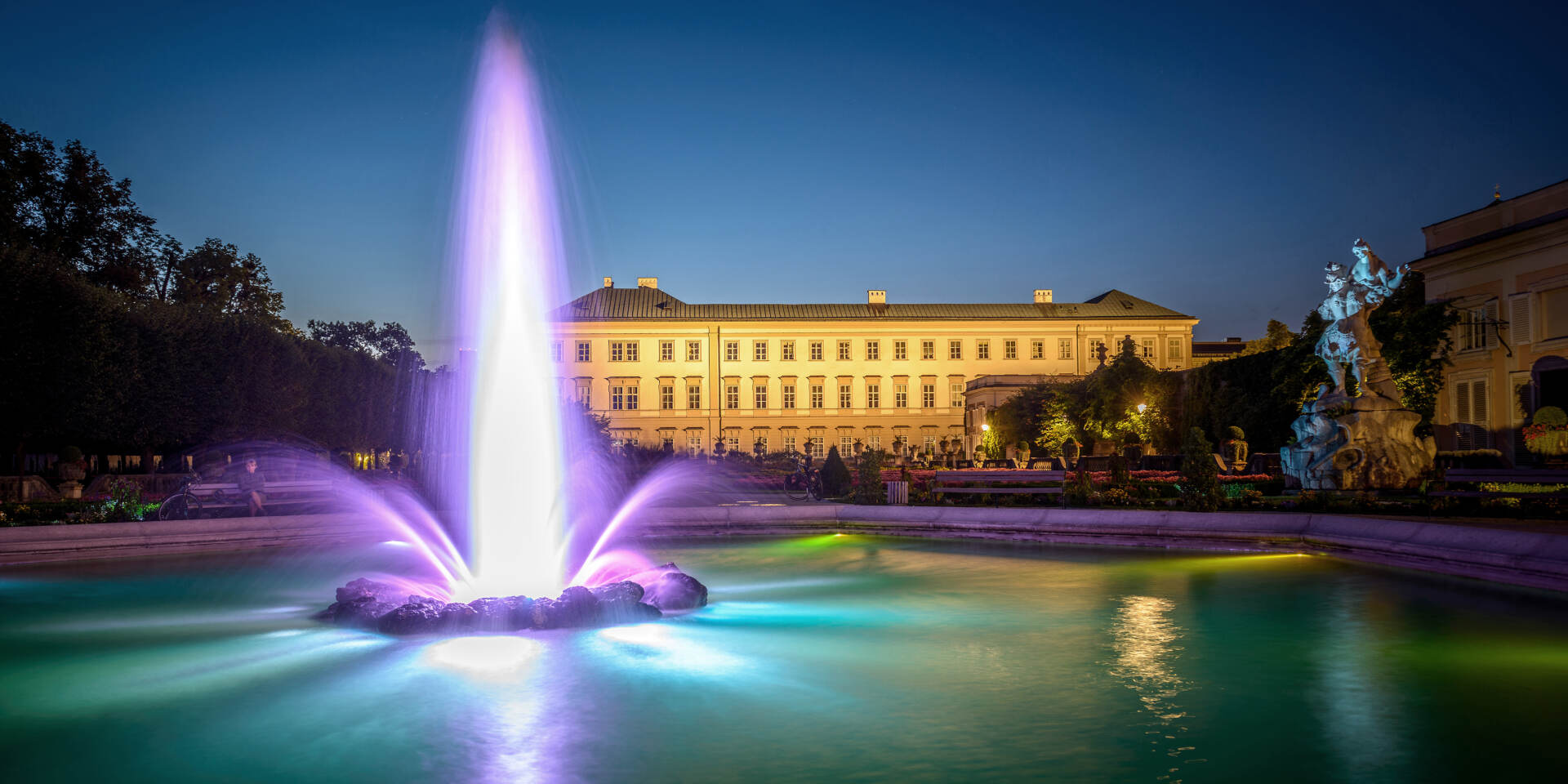
Nonnberg Abbey
Nonnberg Abbey is the oldest convent for women north of the Alps. It has been in continual existence since it was founded in the year 714 A.D. In the course of its history, the Abbey was destroyed by fire several times, but it was always rebuilt by the rulers of the city and the church. Today's building was erected in the early 16th century.
The Abbeyis significant both for the real Trapp story as well as for the movie. After graduating from college, Maria Augusta von Kutschera took a train to Salzburg to present herself as a candidate for the novitiate of the Benedictine Sisterhood. After serving as a governess outside the abbey she and Baron von Trapp married in the Abbey Church in 1927.
The Sound of Music scenes shot here include the opening scene where the nuns go to mass and Maria returns too late. The performance for the song "Maria" was staged in the courtyard of the Abbey. The children came to the Abbey's gate to ask Maria to return to their home. The escape scene, with the cars parked outside the Abbey gate, was also shot in the original spot.
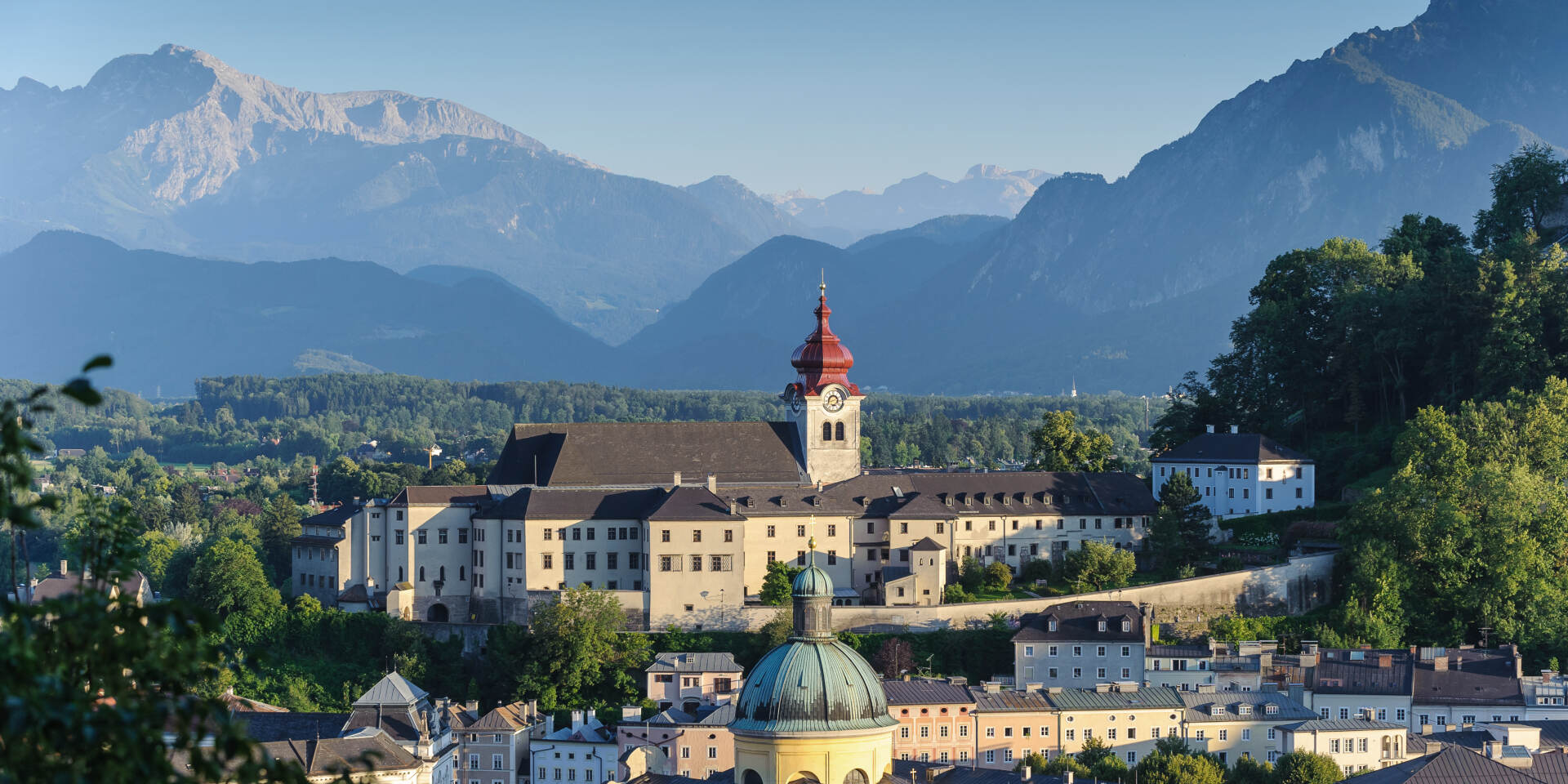
Summer Riding School
For the construction of the Salzburg Cathedral, boulders were cut out from the Mönchsberg. In 1693, Archbishop Johann Ernst von Thun decided to use this cavity in the mountain and had the Summer Riding School built into it, where tournaments were held. Today this building is a theater and one of the venues of the Festival District. The "real" Trapp family sang here at a choir competition. In the motion picture, Christopher Plummer sang "Edelweiss" while their escape was organized behind the curtain.
The Horse Pond next to the Festival Building is another sight a lot of people associate with The Sound of Music. It was built in 1695 by Austrian architect Fischer von Erlach.
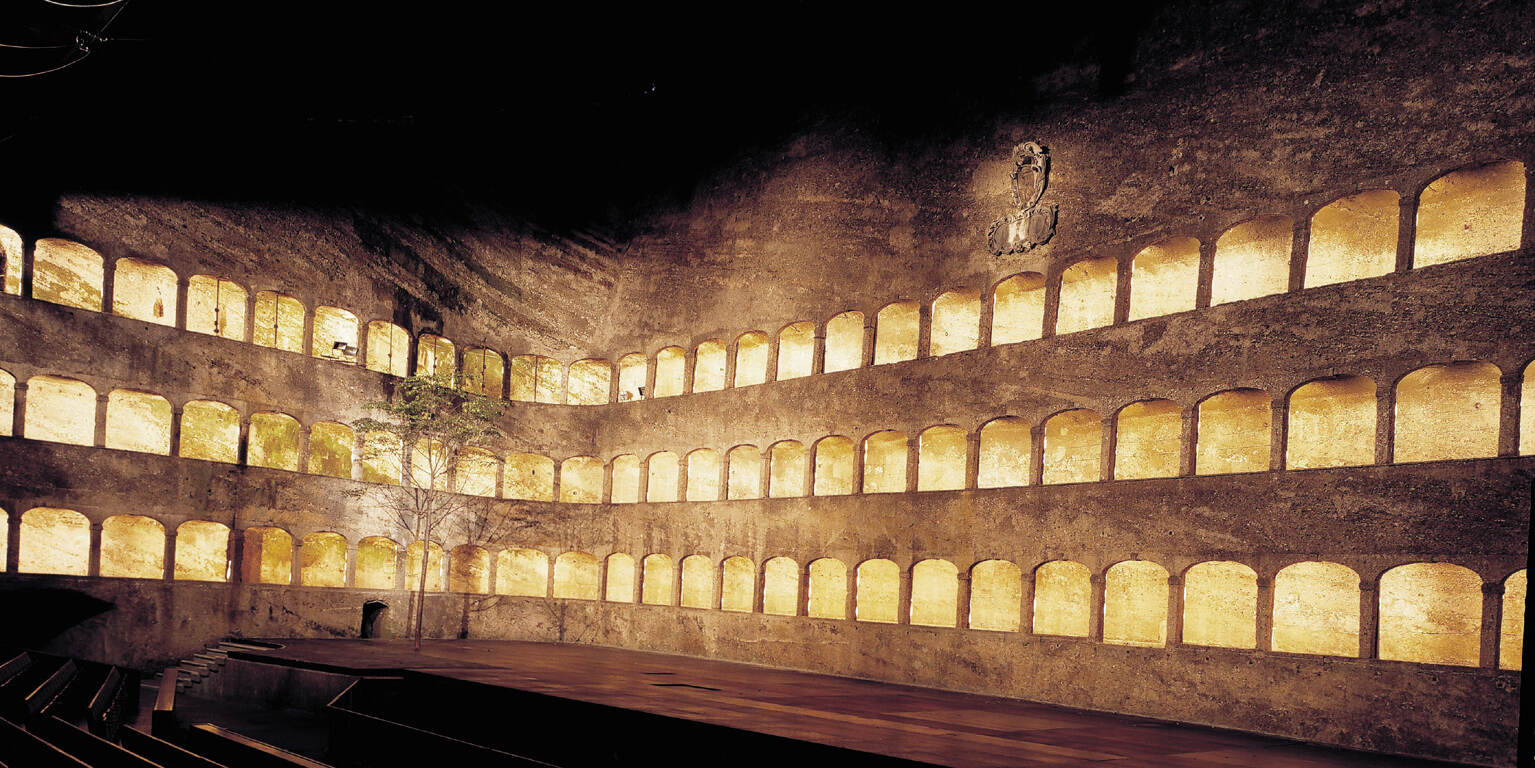
Salzburg Residence
The Residence Square is the heart of the old city center. In the film, Maria crossed this square singing "I have confidence" while on her way to the Trapp family home for the first time.
Residence Fountain
The Residence Fountain is 15 meters high and the largest baroque fountain outside of Italy. It was built between 1658 and 1661, possibly by Italian artist Tommaso di Garona, and is made of marble from the Untersberg, a mountain near Salzburg. Its water-spouting horses reached world fame thanks to their appearance in the movie. Maria stopped at the fountain to splash water at the horses while singing "I have confidence".
St. Peter's District
St. Peter's District is really the oldest part of Salzburg. The first monks, headed by Saint Rupert, settled here. The rest of the city started to spread out slowly around the monastery. St. Peter's cemetery is the oldest one in Austria still in use. Only priests and monks were buried here until the year 1454. The arcades around the cemetery are family vaults from the 17th century with various examples of wrought iron work.
Obviously, St. Peter's Cemetery was a good inspiration for the movie makers: It was rebuilt in the Hollywood studios for the scene when the Nazis were searching for the von Trapps and the family was hiding behind the tombstones. St. Peter's Church can also be seen in the opening scene.
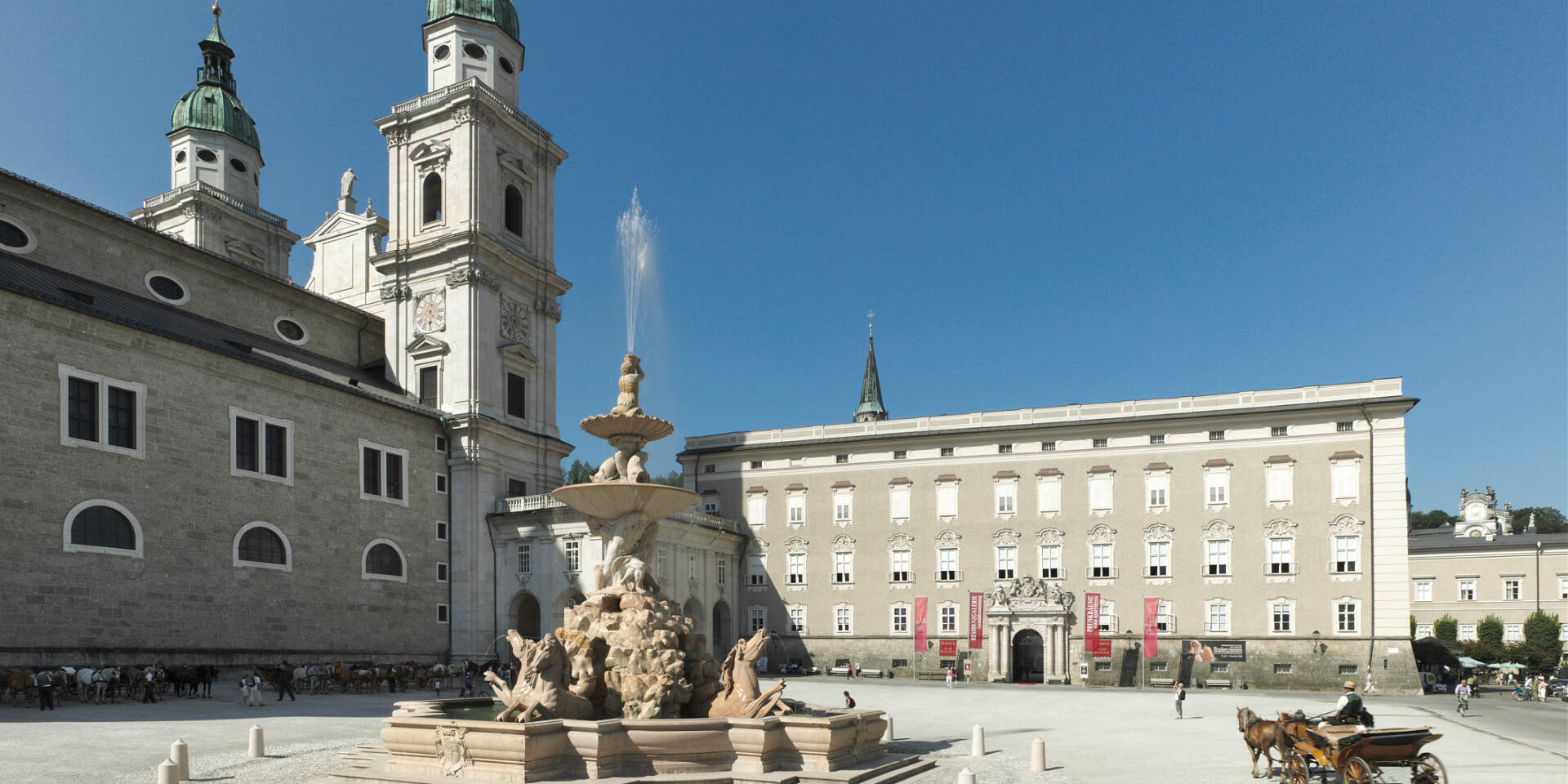
Frohnburg Palace
The Baroque Frohnburg Palace was built in the 17th century as a country house for the Prince Archbishops. Its facade, courtyard and front gate were used for the Trapp Villa in the film.
Maria arrived here, after dancing along the Hellbrunn Alley, to meet the von Trapps for the first time. The baron tore the flag down from above the castle's doorway when they returned from their honeymoon and heard about the German occupation of Austria. They pushed their car noiselessly out of the castle's gate when they tried to escape.
Today, the castle houses music students from the Mozarteum Music Academy.
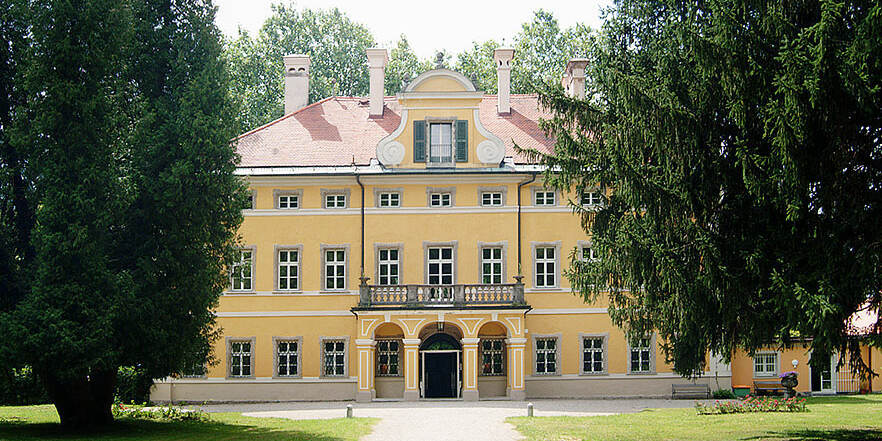
Hellbrunn Palace
Hellbrunn Palace, just a few kilometers south of the city, was built between 1613 and 1619 under the orders of Markus Sittikus von Hohenems. As the Archbishop had spent part of his life in Italy he tried to recreate an Italian atmosphere in this castle and its gardens. Unlike many other palaces, Hellbrunn has undergone no style changes and so, even today, the visitor can enjoy the lovely southern scenery of this renaissance park. The artificial water games in Hellbrunn with numerous grottoes, trick fountains and the mechanical toy theater were built to entertain the noble guests of Archbishop Markus Sittikus. The impressive frescoes in the palace halls are masterpieces of the 17th century by Donato Mascagni From Florence.
Gazebo at Hellbrunn
One of the main sites from the film is the glass gazebo, setting for various love scenes, like "Sixteen Going on Seventeen" and "Something Good". After a complete renovation, it was reconstructed in the park of Hellbrunn Palace. This is not the original setting, which was the garden of Leopoldskron Palace, but a more accessible one for visitors.
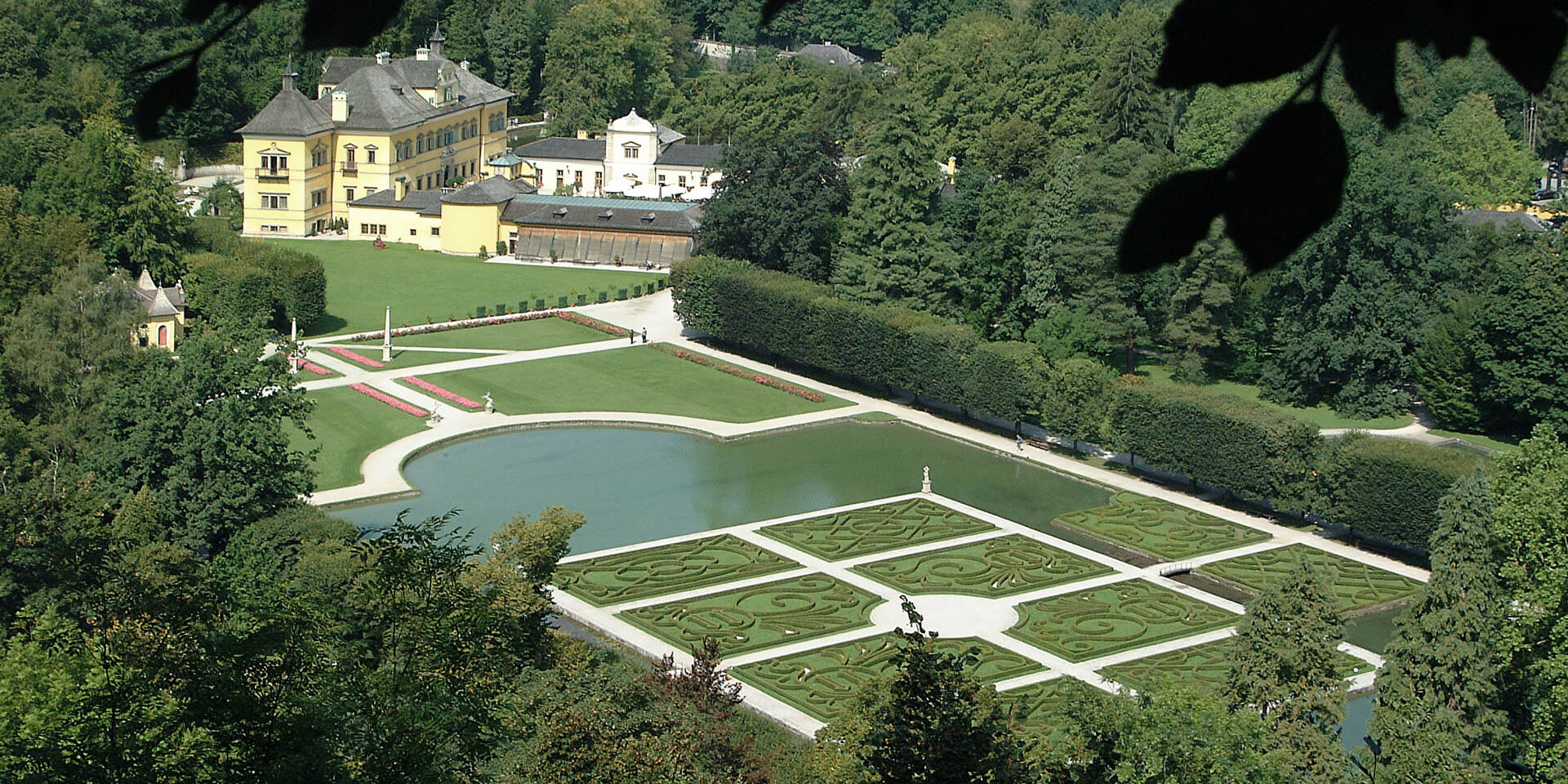
Schloss Leopoldskron
The Palace at Leopoldskron is the most beautiful rococo building in the Salzburg region. It was built in 1736 by Archbishop Leopold Count Firmian as a residence for his family. After 1837, when the Firmian family sold the estate, the building changed owners many times. Leopoldskron was a gallery, then became property of a landlord, and even the King of Bavaria can be found on the list of owners.
When famous writer Max Reinhardt, founder of the Salzburg Festival, bought it in 1918, it was in bad condition. Reinhardt renovated it to its original beauty and used its garden for theater performances. Since 1958, the building has been owned by the "Salzburg Seminar in American Studies", an institution that focuses on the study of economy.
Schloss Leopoldskron was one of the most important locations for the film: The rear view was used for the Trapp Family home. The family drank lemonade with the baroness on the terrace. Maria and the Baron danced on the balcony during the ball scene, and the children fell into the adjacent lake. The Venetian room from the castle was copied and used as the ballroom for the interior shootings which were done in the studios.
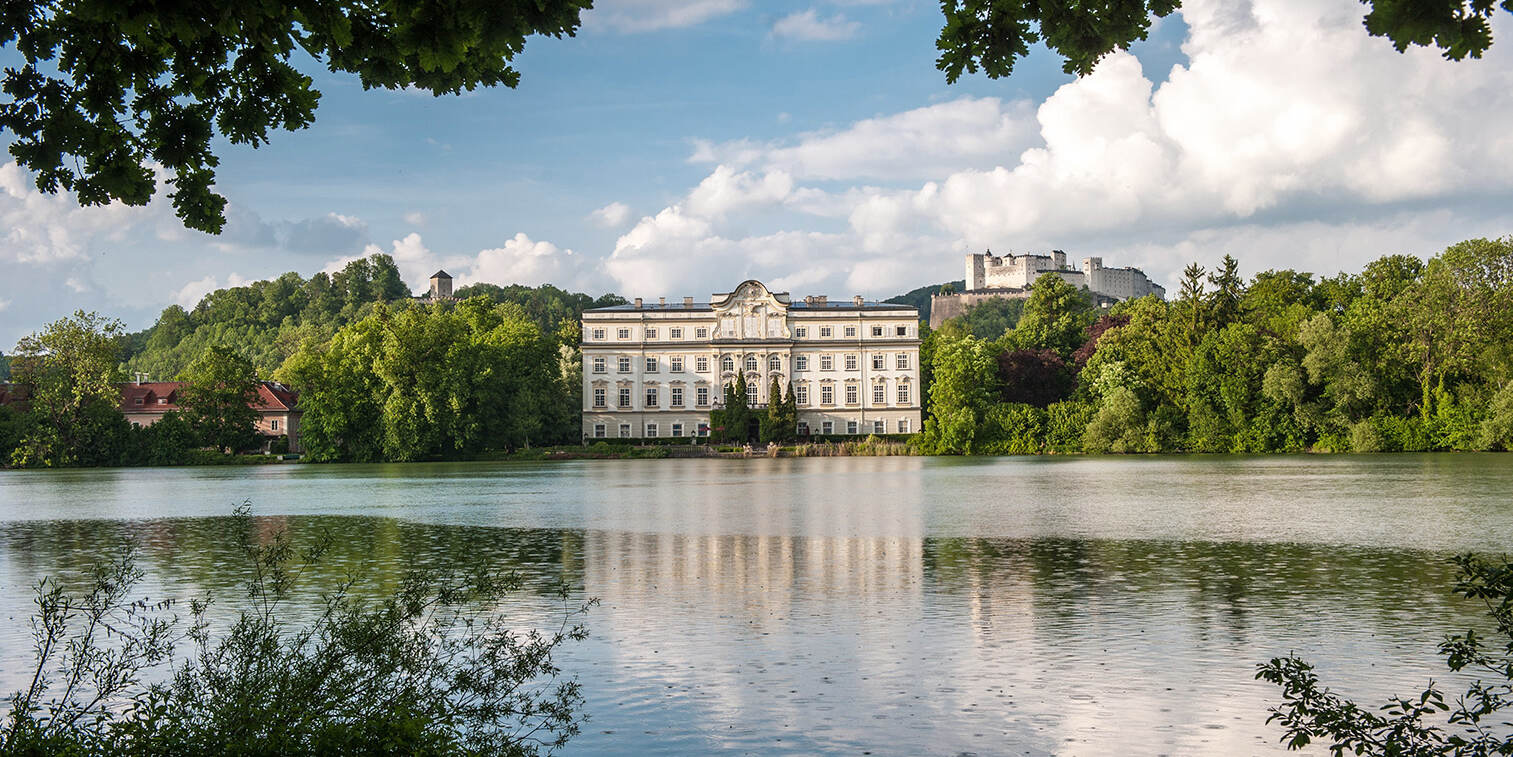
Hohenwerfen Fortress
A motorway leads to the little village of Werfen which is situated about 40 kilometers south from downtown Salzburg. The fortress was built under the rule of Archbishop Gebhardt von Helffenstein in the year 1077 to protect and defend the pass leading into the Salzburg basin. Werfen is also the gateway for a trip to the famous Giant Ice Caves. A guide takes you into the spectacular cave system which is said to be biggest in the world.The Hohenwerfen Fortress gives Julie Andrews and the children a perfect background for "Do-Re-Mi".
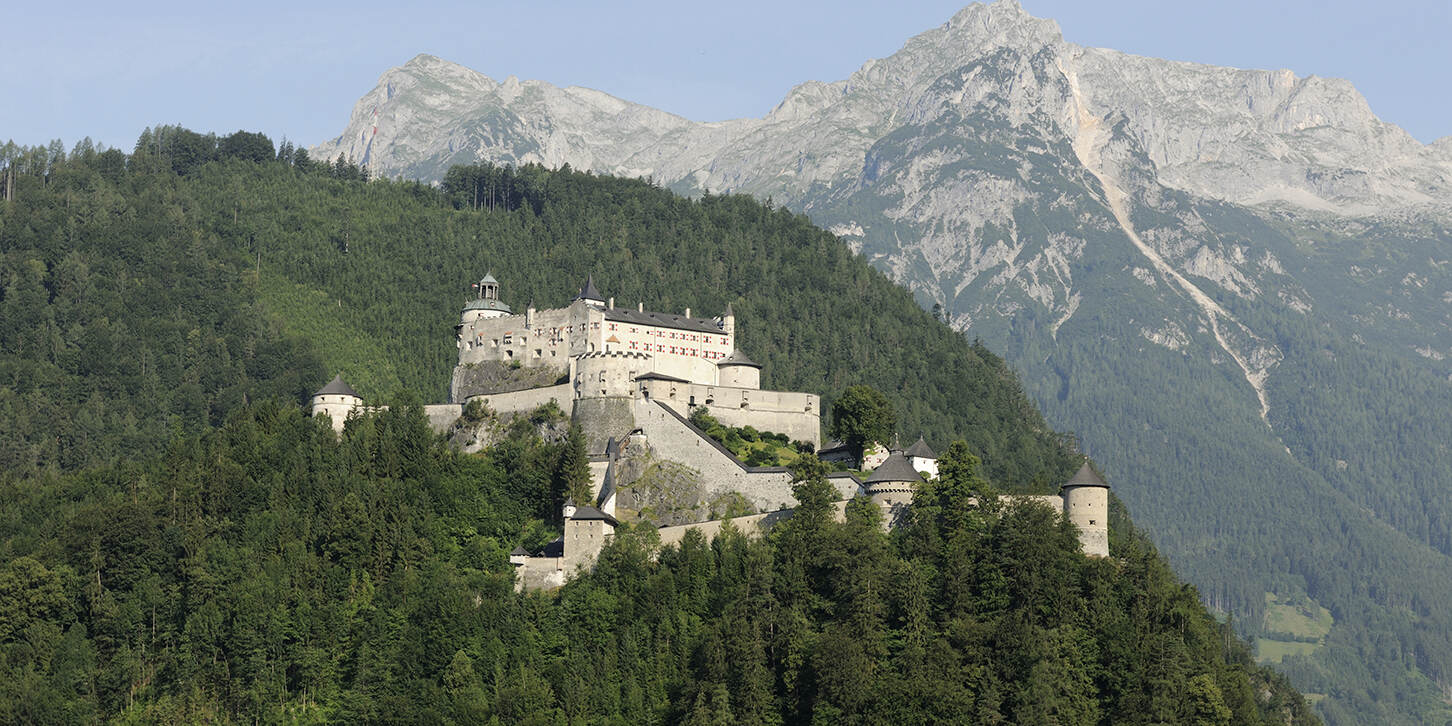
Lake District
The Lake District or "Salzkammergut" extends across the entire area of Alpine and Lower Alpine lakes. Three Austrian Provinces, Salzburg, Styria, and Upper Austria, share this unique region.
Town of St. Gilgen
St. Gilgen is situated at the shore of a popular lake of the Salzkammergut, the Wolfgangsee. Mozart's mother, Anna Pertl, was born here. That is why a small Mozart museum has been set up here.
Town of St. Wolfgang
St. Wolfgang is also situated on the Wolfgangsee. The village is one of the most beautiful spots in the region, but also the most touristy one, especially the lakeside inn "The White Horse Inn".
Town and Lake Mondsee
A large cathedral dominates the small town of Mondsee. It was once the heart of an important monastery. Founded in 748 on the ruins of a roman settlement, it influenced the culture of the region for more than a thousand years until it was disbanded in 1792. The wedding scene in the movie was filmed here, Maria, led by Liesl, walked down the aisle to meet the baron in front of the main altar.
